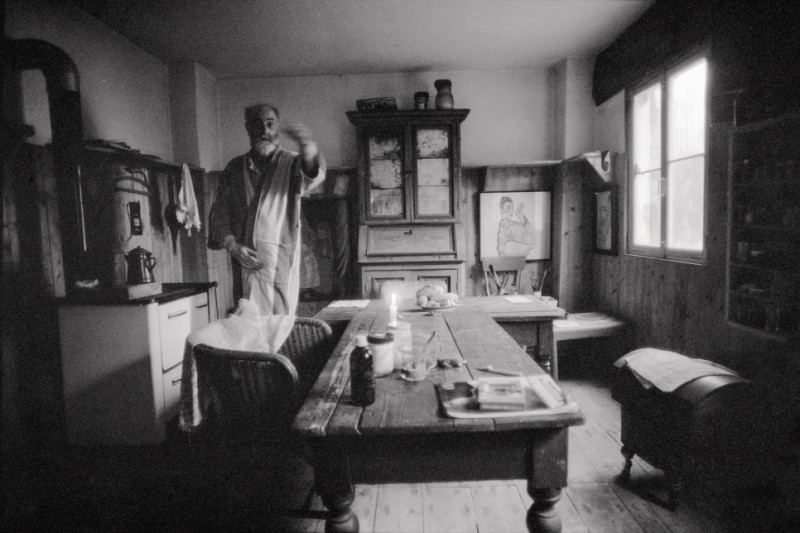Giardino Eden Venedig (Fotograf: Alfred Schmid)
Open Image GalleryHundertwasser in the Casettino of the Giardino Eden
Venice, 1989
Alfred Schmid
Alfred Schmid
Friedensreich Hundertwasser
Hundertwasser's Places of residence
Since his participation in the 1962 Art Biennale, Hundertwasser felt a special connection to Venice. He rented a flat in the Casa de María on the Isola della Giudecca during the preparatory phase. He later became aware of a villa on the "back" of the Giudecca, facing the lagoon, with a large garden, the "Giardino Eden", which was purchased at the end of the 1970s. The garden is named after Frederic Eden, who bought the land in 1884 and spent several years designing and realising the garden. He wrote about it in detail in various essays and in his book A Garden in Venice, published in London in 1903. Around 1928, the property passed into the hands of Princess Aspasia of Greece (the "morganatic" widow of the Greek king) and finally belonged to the ex-queen Alexandra of Yugoslavia. Between the wars and sometimes even afterwards, the European aristocracy met here; many artists and poets were also guests in the villa and garden. With Hundertwasser, peace and quiet returned. He made no changes to the grounds and, in keeping with his convictions, allowed the garden to grow and proliferate freely. Only when the overgrowth threatened to get out of hand did he have the overgrown climbing plants cut back in order to restore it to its original state. He himself never lived in the villa mentioned by Frederic Eden, but preferred gardeners' cottages as his accommodation. In the middle of the park, he felt closer to nature. There were cats and free-range chickens and ducks. The house and garden were and are looked after by Emilio and Esterina Casagrade and their son Elvio Casagrande. For many years, the villa housed the artist's office, managed by Ottilia Iten, which had previously been set up in the Casa de Maria.
Wieland Schmied, in: Hundertwassers Paradiese. The Hidden Life of Friedrich Stowasser, Munich 2003.
